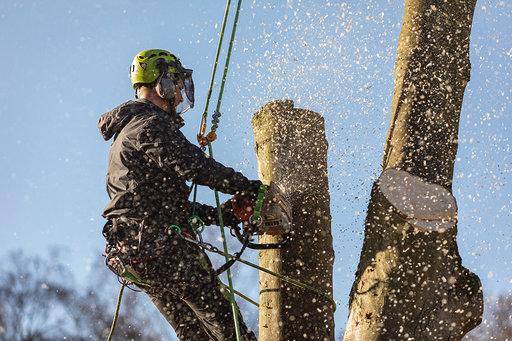Crown Reduction vs. Topping – Understanding the Crucial Differences
When it comes to managing the size and shape of trees, homeowners are often presented with two options: crown reduction and topping. While both methods involve cutting back parts of the tree, they differ significantly in terms of technique, impact on the tree’s health, and long-term benefits. At Long Eaton Tree Surgeons, based in Nottinghamshire, we believe that understanding these differences is crucial for making informed decisions about tree care. In this post, we’ll explain the key distinctions between crown reduction and topping, and why choosing the right method is essential for maintaining the health and safety of your trees.
What is Crown Reduction?
Crown reduction is a professional tree pruning technique that involves carefully removing the outer branches of the tree’s crown, reducing its overall size while maintaining its natural shape. This method is designed to decrease the height or spread of the tree without compromising its structural integrity or aesthetic appeal.
- Purpose: Crown reduction is often used to reduce the risk of branches interfering with buildings, power lines, or other structures, and to improve the tree’s ability to withstand strong winds and heavy snow.
- Technique: Skilled arborists selectively prune the outer branches, ensuring that the tree’s natural form is preserved. The cuts are made at specific points where the branch can continue to grow in a healthy manner, reducing the overall size of the crown by 20-30% while promoting healthy regrowth.
- Benefits: Crown reduction is a sustainable method that enhances the tree’s health and longevity. It reduces the weight of heavy branches, lowers the risk of breakage, and improves light penetration and air circulation within the tree.
What is Topping?
Topping, also known as “heading,” is a more aggressive pruning method that involves cutting off the upper portion of the tree, often removing the entire top or large branches indiscriminately. This practice is generally discouraged by professional arborists due to its detrimental effects on the tree.
- Purpose: Topping is often performed by untrained individuals as a quick fix to reduce the height of a tree that is considered too tall or potentially hazardous.
- Technique: This method involves cutting large branches or the main trunk back to stubs, leaving behind a drastically altered tree structure. The cuts are often made without regard to the tree’s natural growth pattern, leading to significant stress and damage.
- Drawbacks: Topping severely weakens the tree, making it more susceptible to diseases, pests, and decay. The large open wounds created by topping can lead to rot and the eventual death of the tree. Additionally, topping triggers rapid, weak regrowth, which can create a more hazardous situation than the original issue.
Why Crown Reduction is the Preferred Method
- Promotes Tree Health: Unlike topping, crown reduction is a method that supports the tree’s health. By making precise cuts that follow the tree’s natural growth pattern, crown reduction encourages strong, healthy regrowth while maintaining the tree’s structural integrity.
- Aesthetic Preservation: Crown reduction allows the tree to retain its natural shape, contributing to the overall beauty of your landscape. Topping, on the other hand, often results in an unsightly, disfigured tree.
- Long-Term Benefits: Trees that undergo crown reduction are less likely to develop structural weaknesses and are better equipped to resist diseases and pests. In contrast, topped trees often require more frequent and costly maintenance to address the issues caused by improper cutting.
Why Avoid Topping?
Topping might seem like a quick solution, but it often leads to long-term problems that can be costly and difficult to manage. The rapid regrowth triggered by topping creates a dense canopy of weak branches that are more likely to break during storms, posing a greater risk to property and safety. Furthermore, the stress caused by topping can shorten the tree’s lifespan, leading to premature decline and the need for eventual removal.
Why Choose Long Eaton Tree Surgeons?
At Long Eaton Tree Surgeons, we are committed to providing tree care services that prioritise the health and wellbeing of your trees. Our team of experienced arborists is trained in the latest pruning techniques, ensuring that your trees receive the best possible care. Whether you need a crown reduction to manage the size of your tree or advice on the best way to maintain its health, we are here to help.
Conclusion
Understanding the differences between crown reduction and topping is essential for making informed decisions about tree care. While topping can cause significant harm to your trees, crown reduction offers a healthier, more sustainable solution that preserves the beauty and safety of your landscape. If you’re in Long Eaton, Nottinghamshire, and need expert advice or tree care services, contact Long Eaton Tree Surgeons today. Let us help you maintain the health and longevity of your trees with professional, responsible care.
Call us on: 0115 647 3811
Click here to find out more about Long Eaton Tree Surgeons
Click here to complete our contact form and see how we can help with your tree’s needs.

